Old Dhaka Weddings: Of flavours and traditions
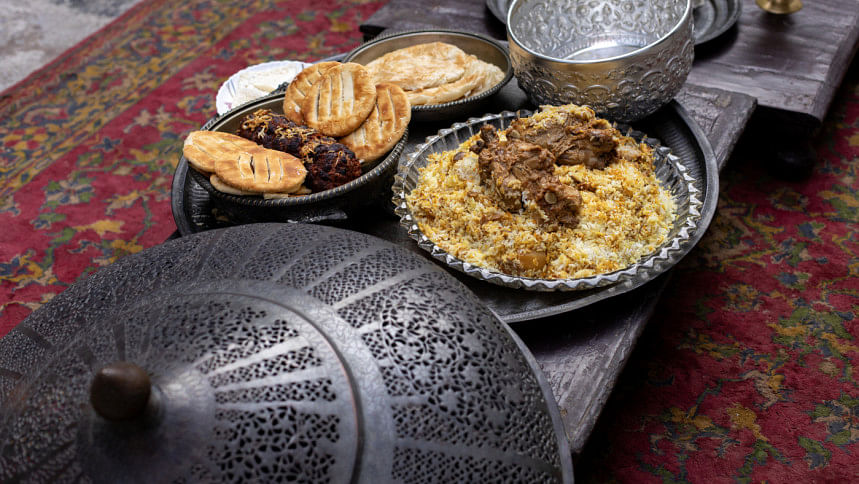
In Old Dhaka, while couples unite in holy matrimony, family and friends celebrate over a hearty helping of polao and meat dishes. Kachchi biriyani has emerged as the quintessential wedding dish, but a flashback to the bygone days will probably remind one of saffron-infused murg polao. So, how did Old Dhaka's palate change from a love for decadent chicken recipes to a mutton staple? This is that story — one of taste, family, and much more.
A history of flavours
From Chawk Bazar, an eight-minute walk through Jail Road will take you to our destination: 48 Abul Hasnat Road. Residents of this establishment are the illustrious Syed family. Their household is a witness to the confluence of culture that has taken place in the old town, as they have lived in this same location for more than three centuries.
"If you talk about wedding food, you must appreciate that assimilation of traditions has taken place and there is no longer an exclusive 'Dhakaiya menu.' This was not the case even five decades ago," said Syed Ahmed Ali, who himself is a food connoisseur. "True, certain customs are still very much in place, but at the end of the day, it is kachchi, chicken roast, and rezala that reign supreme," he added with a smile.
Perhaps, the diversity in an Old Dhaka wedding lies not in the preparation of the dishes, but in its epicurean culture, how a long list of food-related rituals makes it the centre stage of all Old Dhaka weddings.
Unique events, delectable foods
Zeenat Parveen serves as the president, Jahanara Foundation Museum located at Bangshal and has been a keen observer of the Dhakaiya lifestyle for decades.
"Weddings are an elaborate affair for the people of old Dhaka, starting with the paanchini, jamai khawon, balabali, and the biye. They are then followed by a series of post-wedding events like boubhat and firani," Parveen says.
She adds, "At one point in time, each of these events had features unique to the locality and the community that lived there. To this day, the paanchini or baatpakka, for instance, remains a significant event in Old Dhaka weddings."
In Muslim marriages, the day also marks the settlement of the wedding mahr (dower) through consultation and mutual understanding.
The groom is kept away from these discussions, and to compensate for the missed feast of the baatpakka, the custom of "jamai khawon" evolved. The idea is simple — the bride's family sends food to the groom, for his entourage, and members of the closely-knit community. Traditionally, the list of food sent for jamai khawon was long and varied and to this day, carrying all the dishes from the bride's household to the groom's place often involves a truck!
While the pomp of this ritual remains a fond practice among Dhakaites, the extravagance raises questions. One can easily argue that jamai khawon should serve as a reminder that one must strike a balance in preserving cultural heritage while at the same time coming to terms with modern-day sensibilities.
A love for chicken
It is surprising to many that the quintessential wedding dish of Dhakaites involved neither beef nor mutton. So, what was the secret to the popularity of chicken?
The answer is in the secrets of the Mughal kitchen. The preparation of the polao was a laborious process and considerably different from how it is now cooked in households of Dhaka and beyond.
In his book, 'Dhakai Khabar O Khaddo Sangskrity,' food historian Saad ur Rahman chronicles the elaborate method of cooking murg polao.
"Four chickens cut into 16 pieces were mixed with one kilogram of fine-grained, chinigura rice and this was slow-cooked along with raisins, a variety of nuts, alu Bukhara, clarified butter, milk cream, and saffron," Rahman mentions.
He adds, "The meat and rice were mixed in such a precise manner that the meat would stand out from the grains. The rice would soak the ghee and have an oily texture, but never greasy, to release the oil when pressed."
The Mughal, murg polao was devoid of green chillies or fiery spices. It is easy to imagine that the dish that comes out of our modern kitchens is pale in comparison to the authentic murg polao once served at various wedding events.
A noteworthy culinary tradition at wedding events was that burhani was never followed by firni but rather, jarda or mutanjan. Fine grain rice steeped in saffron and mixed with cashew, raisins, almonds, khoya, and topped with slivers of silver leaf. What makes it extraordinary are the shreds of well-seasoned, subtly sweetened meat!
Of kachchi and other traditions
Although known as a festive delicacy, kachchi biryani gained prominence as a wedding dish after the migrations following the Partition of 1947.
According to Zeenat Parveen, the rich and hearty nature of kachchi biriyani made it an ideal choice for wintry celebrations. This Central Asian dish reached a pinnacle of taste in the hands of our local chefs, and it is now prized for its warmth and decadence.
"The enduring appeal of kachchi lies in its ability to serve as a complete, standalone meal. With its luxurious blend of tender mutton, aromatic rice, and perfectly balanced spices, it quickly earned its place as the quintessential dish for Dhaka weddings, blending tradition with indulgence," she said.
Marriages are made in heaven, and Bengali weddings are incomplete without events brimming with good food. Like a flowing river, traditions evolve. From chicken delicacies to today's staple kachchi, Old Dhaka's wedding menus too, have changed. A decade ago, serving naan and vegetables before kachchi was unheard of — perhaps 50 years from now, this "novelty" will be part of our wedding culture and something to write about.
Photo: Orchid Chakma
This article was written as part of a collaboration between Star Lifestyle and Goethe-Institut Bangladesh.

 For all latest news, follow The Daily Star's Google News channel.
For all latest news, follow The Daily Star's Google News channel. 


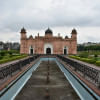
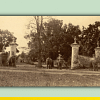
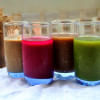


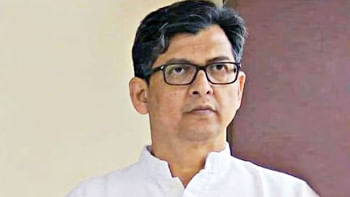
Comments